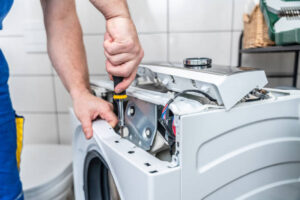Introduction
More important than ever in the fast-changing digital scene is the influence of technology on commercial activities. Companies regardless of size, depend heavily on their IT infrastructure to maintain competitiveness, ensure efficient operations, and safeguard sensitive data. But as technology grows, the hardware formerly underpinning your company could become outmoded, therefore performance bottlenecks and security risks. The strategic value of improving IT hardware is explored here, showing how such transactions can increase business development, increase efficiency, and strengthen security.
- Recognizing the Signs: When to Upgrade Your IT Hardware
Understanding when to upgrade your IT hardware is crucial for maintaining optimal performance. Several indicators suggest it’s time for an upgrade:
- Decreased Performance: Frequent system crashes, slow processing speeds, and prolonged boot times can hinder productivity.
- Incompatibility with New Software: Modern applications often require advanced hardware capabilities. If your current systems struggle to support new software, it’s a clear sign an upgrade is needed.
- Increased Maintenance Costs: Older hardware may require frequent repairs, leading to escalating maintenance expenses.
- Security Vulnerabilities: Outdated hardware may not support the latest security features, exposing your business to potential threats.
Regularly assessing your IT infrastructure helps identify these issues early, allowing for proactive upgrades that prevent operational disruptions.
- Enhancing Productivity Through Modern Hardware Solutions
Improved output goes hand in hand with financial resources put in modern IT equipment. Faster data processing and access from improved processors, more memory, and solid-state drives (SSDs let staff to work more effectively. Switching from regular hard drives to solid-state drives, for example, can greatly lower loading times for files and programs, therefore improving workflow consistency and minimising downtime.
Modern hardware also supports multitasking features, which enable staff members to run many programs at the same time without sacrificing performance. This efficiency not only accelerates daily operations but also fosters a more dynamic and responsive work environment.
- Strengthening Security Measures with Updated Hardware
Keeping strong security measures is especially important in an age when cyber threats are becoming more sophisticated. This defense plan depends significantly on modernizing IT hardware. Integrated biometric authentication systems, secure boot processes, and hardware-based encryption are among the more sophisticated security technologies found on more recent devices.
Modern processors frequently incorporate hardware-level security features, therefore beginning with a basis of security that software solutions alone cannot provide and shielding against malware and unapproved access. Businesses can therefore more efficiently safeguard sensitive data and lower the risk of data breaches by incorporating these sophisticated capabilities.
- Facilitating Scalability and Supporting Business Expansion
As businesses grow, their IT requirements evolve. Upgrading hardware ensures that your infrastructure can scale in tandem with your expansion efforts. Modern hardware solutions offer greater flexibility, allowing for easy integration of additional resources such as increased storage capacity, enhanced processing power, and support for more users.
Scalable IT infrastructure is essential for accommodating new business applications, entering new markets, or managing increased customer demands. By proactively upgrading hardware, companies can avoid potential bottlenecks that may impede growth and ensure a seamless transition during expansion phases.
- Achieving Cost Efficiency Through Proactive Upgrades
While the initial investment in new hardware may seem substantial, the long-term cost benefits are significant. Modern hardware is designed for energy efficiency, reducing power consumption and lowering utility expenses. Additionally, newer equipment typically experiences fewer failures, decreasing the costs associated with repairs and downtime.
Furthermore, up-to-date hardware can extend the lifecycle of your IT infrastructure, delaying the need for future replacements and maximizing the return on investment. By carefully planning and implementing hardware upgrades, businesses can achieve a balance between performance and cost, leading to sustainable financial management.
- Aligning Hardware Upgrades with Business Objectives
To maximize the benefits of IT hardware upgrades, it’s essential to align these initiatives with your overarching business objectives. This alignment ensures that technological investments directly contribute to achieving strategic goals such as market expansion, product innovation, or customer service enhancement.
Engaging stakeholders from various departments during the planning process fosters a comprehensive understanding of specific needs and challenges. This collaborative approach leads to tailored hardware solutions that support diverse operational requirements, driving cohesive progress toward business objectives.
- Navigating the Upgrade Process: Best Practices
Embarking on IT hardware upgrades requires careful planning and execution. Consider the following best practices to ensure a smooth transition:
- Conduct a Comprehensive Assessment: Evaluate your current hardware to identify deficiencies and areas for improvement.
- Develop a Strategic Plan: Outline the scope, timeline, and budget for the upgrade project, ensuring alignment with business goals.
- Engage Qualified IT Professionals: Collaborate with experienced technicians to manage the installation and configuration of new hardware.
- Implement Training Programs: Provide employees with training on new systems to facilitate adoption and maximize productivity.
- Monitor and Evaluate Performance: Regularly review the performance of upgraded hardware to ensure it meets expected outcomes and make adjustments as necessary.
By adhering to these practices, businesses can minimize disruptions during the upgrade process and fully capitalize on the benefits of modern IT hardware.






